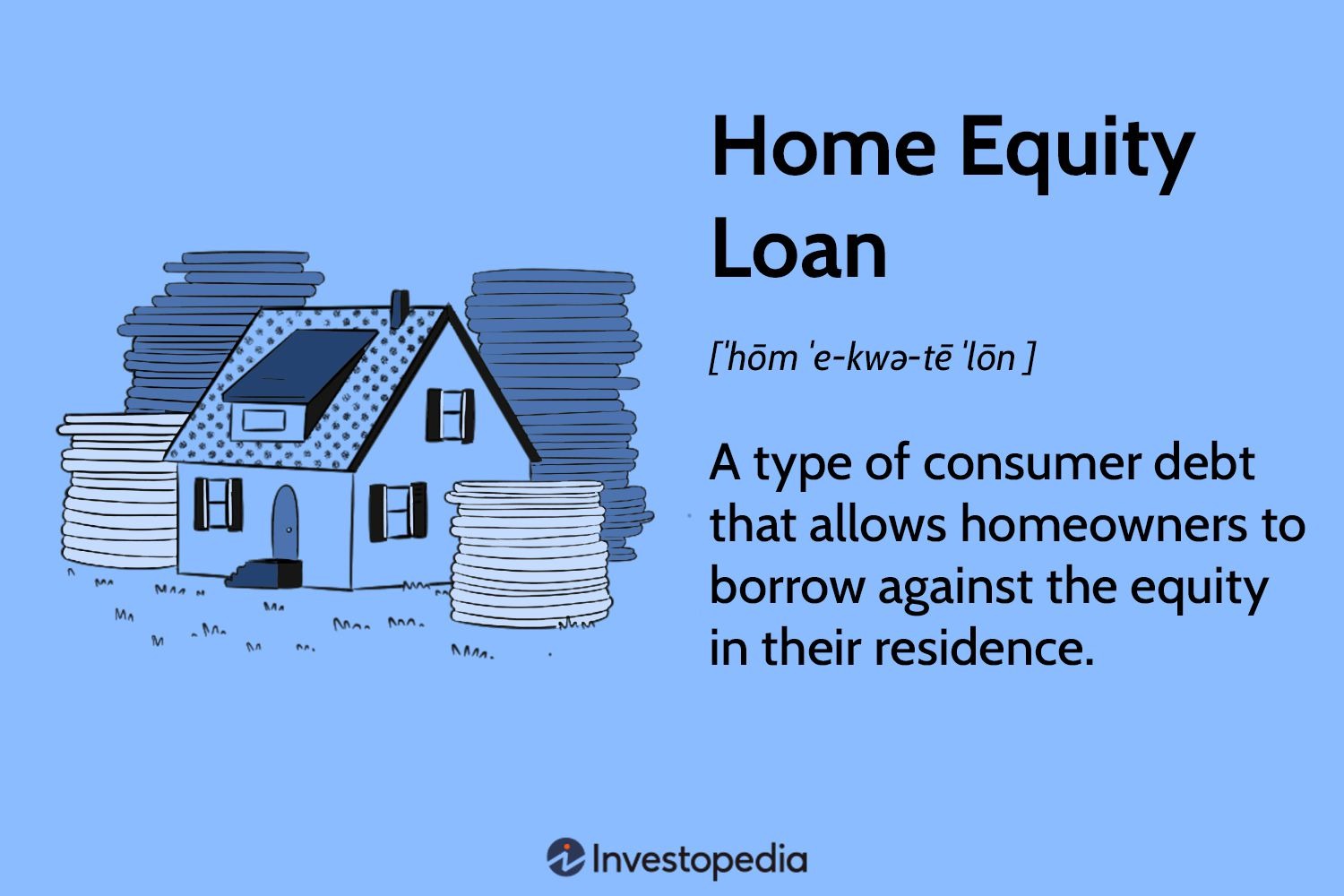A home equity loan is a type of loan that allows homeowners to leverage the value of their property to obtain funds for major expenses. It is a secured loan, meaning that the borrower uses their home as collateral to secure the loan. The amount of the home equity loan is determined by the difference between the current market value of the property and the outstanding mortgage balance.
Contents
Understanding Home Equity
A. Definition of Home Equity:
Home equity refers to the current market value of a homeowner’s property minus any outstanding mortgage balance. In simpler terms, it is the portion of the property that the homeowner truly owns. As the homeowner pays off the mortgage over time and the property’s value appreciates, the equity in the home increases.
B. Calculating Home Equity:
The calculation of home equity is relatively straightforward. It can be determined using the following formula: Home Equity = Current Market Value of Property – Outstanding Mortgage Balance
C. Factors Affecting Home Equity:
Several factors can influence the amount of home equity a homeowner has:
- Property Market Value: Changes in the real estate market can cause the property’s value to fluctuate, impacting home equity.
- Mortgage Payments: Making regular mortgage payments reduces the outstanding balance and increases home equity.
- Home Improvements: Renovations and home improvements can potentially increase the property’s market value, subsequently boosting home equity.
- Economic Conditions: General economic conditions, such as inflation rates and interest rates, can also impact home values and, consequently, home equity.
- Location: The location of the property can significantly affect its value, leading to variations in home equity among different regions.
D. Building Home Equity:
Building home equity is a gradual process that typically takes place over time. Homeowners can actively work on increasing their home equity through the following methods:
- Making Extra Mortgage Payments: Paying more than the required mortgage installment each month helps reduce the principal amount faster.
- Home Improvements: Undertaking strategic renovations and upgrades can enhance the property’s value and, in turn, boost equity.
- Refinancing: If mortgage interest rates decrease or if the homeowner’s creditworthiness improves, refinancing can lead to a lower mortgage balance and increased equity.
- Regular Maintenance: Properly maintaining the property can preserve its value and prevent depreciation.
Types of Home Equity Loans
A. Traditional Home Equity Loans:
Traditional home equity loans, also known as second mortgages, involve borrowing a lump sum of money against the equity in your home. The borrower receives the entire loan amount upfront and typically repays it over a fixed term with regular monthly payments. The interest rates for traditional home equity loans are usually fixed, meaning they remain constant throughout the loan period. This type of loan is suitable for borrowers who have a specific, one-time expense in mind, such as a home renovation project or a large medical bill.
B. Home Equity Lines of Credit (HELOCs):
A home equity line of credit (HELOC) is a revolving line of credit that allows homeowners to borrow against their home equity as needed, similar to a credit card. Instead of receiving a lump sum, the borrower is granted a credit limit, and they can withdraw funds up to that limit during what is known as the “draw period.” The draw period usually lasts several years, during which the borrower can make interest-only payments. After the draw period ends, there is a “repayment period” during which the borrower must repay both principal and interest. HELOCs typically have variable interest rates, which means the interest rate can fluctuate based on market conditions. This type of loan is suitable for ongoing expenses or projects with uncertain costs, such as home improvements done in stages.
C. Cash-Out Refinancing:
Cash-out refinancing involves replacing an existing mortgage with a new, larger loan, allowing the homeowner to receive the difference between the new loan amount and the current mortgage balance in cash. The homeowner essentially “cashes out” the equity they have built in the property. Cash-out refinancing often results in a new mortgage with more favorable terms, such as lower interest rates or extended repayment periods. This type of home equity loan is suitable for homeowners who want to take advantage of lower interest rates, consolidate high-interest debts, or access a substantial sum of money for major expenses.
Benefits of Home Equity Loans
Home equity loans offer several advantages for homeowners who need access to funds for major expenses. Here are some of the key benefits of using a home equity loan:
A. Lower Interest Rates:
Home equity loans typically come with lower interest rates compared to unsecured loans like personal loans or credit cards. Since the loan is secured by the property, lenders consider it less risky, allowing them to offer more favorable interest rates. This can result in significant savings over time, especially for borrowers with high credit scores who qualify for the best rates.
B. Potential Tax Deductions:
In many cases, the interest paid on a home equity loan may be tax-deductible, making it an attractive option for some borrowers. However, tax laws can vary by region, and there may be limitations on the amount of interest that can be deducted. Homeowners should consult with a tax advisor to understand the specific tax implications based on their individual circumstances.
C. Flexible Use of Funds:
Unlike some other types of loans that come with specific usage restrictions, home equity loans offer flexibility in how the funds can be used. Borrowers can use the money for a variety of purposes, such as home renovations, debt consolidation, education expenses, medical bills, or even starting a business. This versatility allows homeowners to address their most pressing financial needs.
D. Predictable Monthly Payments:
Traditional home equity loans come with fixed interest rates and fixed monthly payments over a set loan term. This predictability makes budgeting easier for borrowers, as they know exactly how much they need to repay each month. For those who prefer stable and predictable financial planning, a home equity loan can be a suitable option.






Review & Discussion